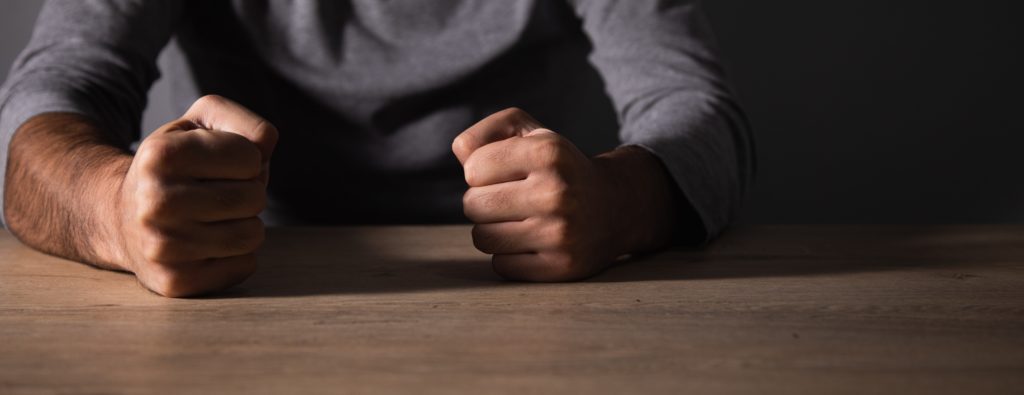Benzodiazepine dependence is an often-overlooked issue affecting millions. While the dangers of substances like heroin dominate headlines, benzos like Xanax, Ativan, and Valium silently contribute to a widespread epidemic. Long-term use, even when taken as prescribed, can lead to dependency, turning a temporary solution into a persistent problem.
This guide offers essential information for men facing benzo withdrawal, providing strategies for managing symptoms safely and effectively. Always seek medical guidance when approaching withdrawal, as it can be life-threatening in severe cases.
Common Benzodiazepines
Benzodiazepines are a class of drugs commonly prescribed for anxiety, insomnia, and other conditions, but they carry a high risk of dependence and withdrawal. Here are the top 10 most commonly prescribed benzos:
- Diazepam (Valium): Long-acting, used for anxiety, muscle spasms, and seizures.
- Alprazolam (Xanax): Short-acting, commonly prescribed for anxiety and panic disorders.
- Clonazepam (Klonopin): Long-acting, used for panic disorders and seizures.
- Lorazepam (Ativan): Intermediate-acting, often used for anxiety and as a pre-anesthetic.
- Temazepam (Restoril): Short-acting, primarily prescribed for insomnia.
- Chlordiazepoxide (Librium): Long-acting, often used for alcohol withdrawal and anxiety.
- Oxazepam (Serax): Short-acting, used for anxiety and alcohol withdrawal.
- Flurazepam (Dalmane): Long-acting, prescribed for insomnia.
- Triazolam (Halcion): Ultra short-acting, used for severe insomnia.
- Midazolam (Versed): Short-acting, often used in medical procedures for sedation.
Each benzodiazepine varies in its onset of action, duration, and specific clinical uses, which can affect the withdrawal experience.
Benzo Withdrawal Symptoms
Benzodiazepine withdrawal symptoms can be severe and difficult to treat without medical supervision. Initial withdrawal symptoms usually consist of sleep disruptions and a vague, general sense of anxiety. However, as withdrawal symptoms continue escalating over the next few weeks, the person with the benzo dependence will grow uncomfortable. Then, they will require medical management to help with the severity of benzo withdrawal symptoms.
Withdrawal symptoms may appear to be under control, then suddenly return stronger than ever. Those withdrawing from benzos may experience sudden bouts of uncharacteristic and unpredictable behaviors as the brain reacts to the absence of the drug. How long these symptoms last and how long a person needs help for their benzo withdrawal symptoms is still uncertain.
Increased Irritability/Outbursts
Benzos are a depressant. That means the drug slows down functions of the body and dulls chemical receptors in the brain. When benzodiazepine use stops, the “calming” chemicals benzos provide are no longer present. After long-term abuse, individuals deal with a range of difficult emotions.
No longer able to calm themselves without medication, users may exhibit initial benzodiazepine withdrawal symptoms like obsessive, irrational, raging, hyperactive, or hysterical behavior. They may also demonstrate inappropriate responses to social cues, commonly known as being “socially awkward.”

What Helps?
It’s important to realize once benzo abstinence begins, feelings can get intense, overwhelming, and in some situations, almost unbearable. But it’s also temporary. Feelings aren’t facts, and the longer a person can abstain from benzo abuse, the quicker the brain begins to heal.
“Once detox began, I was blown away by all my feelings. I reminded myself that these feelings weren’t permanent, and using again will only temporarily stop the pain.” – Anonymous
12-Step programs help people come to terms with the powerlessness they feel. These fellowships pass along actionable steps to help sufferers gain freedom from problematic substance abuse. It’s incredibly relieving to meet individuals who’ve experienced the same difficulties and walked through them better than ever. Someone can find recovery support groups in their area via Alcoholics Anonymous, Narcotics Anonymous, or SMART Recovery.
“Benzos made me angry; however, coming off them made me angrier. I can say that I began feeling relief once I got involved in a fellowship and began to work the steps.” – Anonymous
Inability to Concentrate, Perform Simple Tasks, and Memory Problems
As a depressant, benzos slow down all bodily functions including the production of transmitters that have a stimulating effect. These transmitters are essential for coordination, memory, emotional responses, alertness, and basic reaction times. When there is not enough transmitted stimulation from the brain, the body will not work properly. Basic functions like writing, going to the bathroom, walking, and speaking become difficult.

What Helps?
People should do what they can each day, even if it feels small. The body and brain need to relearn how to work together and accomplish tasks. Start with small things like taking short walks, painting nails, drawing, journaling, learning how to knit, singing, or playing catch. Eventually, people are able to build upon these small tasks and return to normal functioning.
“When I first got to treatment, I couldn’t tell them who the President was. I knew in my brain, but I couldn’t get the words to come out. I re-taught myself how to write by journaling each day. I started with a sentence, but at the end of 2 months, I could write pages.” – Anonymous
Body Aches, Pains, Muscle Stiffness, and Soreness
Many people state this is the most difficult part of benzo withdrawal. Common areas for intense pain are the neck, shoulders, arms, and legs. People frequently report muscle spasms, twitching, vibrations, tightness, jaw clenching, and “jelly legs”. As well, in isolated cases, this symptom can become so severe, the sufferer can be misdiagnosed with multiple sclerosis (MS).

What Helps?
Moving someone’s body is one of the most problematic aspects of withdrawal due to extreme physical discomfort. Wearing comfy clothes and taking a warm bath/shower will provide some relief. But the best defense is to stay active despite the desire to do nothing. Many people found stretching or yoga extremely helpful.
“There were times when I felt as though I couldn’t walk, but at the same time if I stayed still, I felt like my legs would explode. I needed to stay as active as possible. Moving your body can definitely relieve some pain.” – Anonymous
Sleep Disturbances Or Insomnia
People on benzodiazepines sleep. A lot. But it’s not a good kind of sleep. Benzo users are not able to enter the REM (Rapid Eye Movement) sleep cycle. For a brain to function properly, it needs at least 20% of total sleep time to be spent in REM each night.
Imagine the damage done to the brain by depriving it of REM for one month, let alone years. So when REM is reintroduced, it takes time for cycles to return to balance. This can cause people in the initial stages of abstinence to wake up multiple times throughout the night. Additionally, they may also experience intense dreams and nightmares.

What Helps?
Minds enduring benzo withdrawal are hypersensitive to stimulation. When stimulated, the brain takes longer than normal to relax. At night, take a few hours before bed to “unplug”. Avoid TV, the internet, and intense conversations.
Sufferers should make the place they sleep a safe, comfortable spot. Get some scented oils. Play soft music. Read an interesting book. Use a white noise generator. Or meditate. With discipline and abstinence and healthy practices, normal sleep patterns return.
“I needed a dark room, with limited noise and a fan. Then I thought about a place where I couldn’t help but smile when I thought about it. I focused on this place and breathed as deep and slow as possible until I fell asleep.” – Anonymous
Anxiety or Panic Attacks
Anxiety and benzos have a Catch-22 relationship. People often start taking the drug to curb anxiety, yet over time, the substance dulls their senses. When abstinence begins, anxiety swells and can be overwhelming.
Anxiety and panic attacks manifest in many ways. People often describe feeling shortness of breath, rapid heart rate, shaking, cold sweats, impending sense of doom, paranoia, and the sensation of imminent death.

What Helps?
What triggers anxiety is generally specific to that person. Similarly, what calms anxiety is specific to that person. What works for me and countless others are remaining in the present or getting back to the present. As a result, this can have a grounding and centering effect on the person, and calm them down.
Anxiety and panic attacks ignite an overwhelming sense of fear. People should be reminded that they are in the present moment, and they are safe. In the middle of a panic attack, it’s also helpful to get present by initiating an enjoyable activity. Distract the brain by playing guitar, knitting, writing, exercising, or whatever brings the tiniest bit of peace.
“I was on my hands and knees. I couldn’t breathe. I felt like the world was ending. Everywhere was scary and nobody understood what I was going through. My friend put my guitar in my hands and asked me to play. My hands were shaking so badly I could barely strum, but it helped my mind think about something else. Even to this day when I feel anxious or scared, I go to my guitar, and it helps.” – Anonymous
Suicidal Ideation, Seizures, or Death
Preoccupation with thoughts of suicide while going through benzo withdrawal falls into the severe symptoms category, along with hallucinations, seizures, mania, psychosis, and in very isolated cases, death. Many who have undergone withdrawal played out this fantasy to escape the pain of the withdrawal itself. Or perhaps they cannot imagine living a life without the assistance of substance.
Someone in this position should consult with a doctor, or a trusted individual, go to the ER, call 911 or call 800-273-8255 – the national suicide hotline, immediately if you or someone or they know experiences any of these symptoms.

What Helps?
Anyone who has gone through withdrawal will say they thought about suicide at least once. If people have thoughts about self-harm, it is vital that they open up to someone about it immediately, preferably somebody in a position to get help. Talking with another person or qualified professional tends to take away the power of suicidal thoughts.
“I felt suicidal the first time I went to treatment. I did not know how to cope without drugs. However, the longer I stayed sober, the better it got. It also helped when I was honest with another person about where I was at emotionally. The more I talked about my struggles, the stronger I began to feel.” – Anonymous
“It was the combination of the physical and mental pain. I hurt everywhere and I had failed at life again. I woke up one morning and the physical pain was gone. I remembered thinking, ‘It’s just a mental game now. I think can actually do this.’” – Anonymous
Two of the most powerful weapons to help with benzo withdrawal and anxiety are mindfulness meditation and exercise. Most benzo users suffer from various levels of anxiety, acute and/or sporadic. These two practices offer demonstrated coping methods for non-prescription solutions to the anxiety dilemma.
Mindfulness Meditation
Mindfulness is the practice of being fully present in the current moment. So often, people view the world through a prism that has been clouded by unpleasant memories or fears for the future. This meditation helps people accept themselves and their surroundings as they actually are.
When a person practices mindfulness, they become increasingly aware of their surroundings as well as their thoughts and feelings. That said, these feelings are not classified as “good” or “bad.” When a person adopts the practice of mindfulness, they simply acknowledge their emotions and perceptions, then return focus to the present moment.
Mindfulness is an essential concept that boasts a valued place in many addiction recovery programs. To add, mindfulness is where a person can focus on specific elements to reduce the flow of negative thoughts they might be experiencing. For instance, when moving, someone can focus their minds on the movement of their arms, legs, or feet. They can imagine how their feet feel with each step they take.Mindfulness also allows a person to focus on their breathing or how the air feels against their skin. This meditation has been clinically proven to reduce levels of anxiety and can help with benzo withdrawal. Learn more about the mindfulness meditation-drug addiction relationship, and how to start meditating today!

Exercise
Exercise of any kind produces feel-good endorphins. Building strength, flexibility, and physical endurance can all spark positive changes in appearance and thinking. Also, exercise increases feelings of confidence after addiction recovery by promoting self-worth.
Cardio workouts have been shown, time and time again, to reduce levels of stress and anxiety. They can speed up the substance abuse recovery process as well. Someone can consider starting an exercise regimen today if they have completed the benzo withdrawal phase and transitioned to total abstinence.
Another benefit of regular exercise is that it builds self-determination. Setting goals that align with one’s committed decision to get sober can boost self-esteem. After all, it involves making personal decisions, taking action, and working toward goals. These are all crucial to building self-confidence in addiction recovery.
A person doesn’t have to join the gym to experience the benefits of exercise. A simple 20 or 30-minute walk through the park or in the neighborhood is a phenomenal start to help with benzo withdrawal symptoms. Don’t give up if you’re feeling unmotivated. Get help. Stay clean. Live healthy and happy.

We Can Help Treat Benzo Withdrawal
Discovery Place outside Nashville, TN, provides comprehensive 30-day rehab and addiction treatment services to empower people to achieve lifelong wellness and sobriety. We provide personalized care for those who have developed a dependence on benzodiazepines and other prescription medications. When you’re ready to begin your recovery journey, we’re here for you.
Contact us today to learn how we can help. Or call us 24/7 at 800-725-0922.

